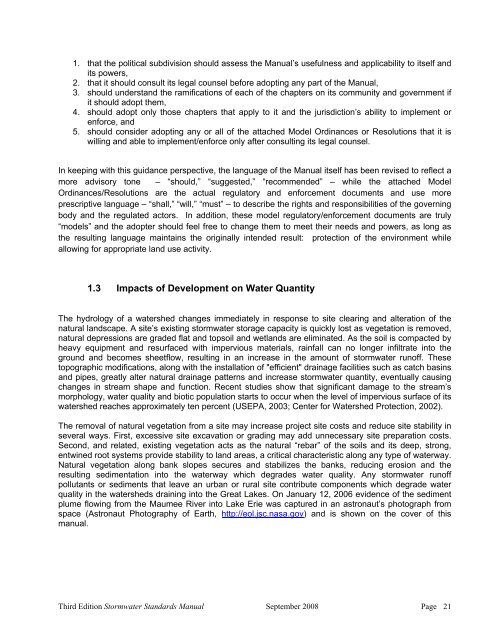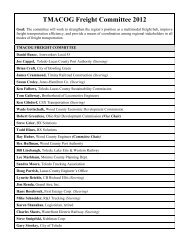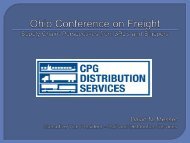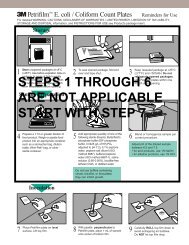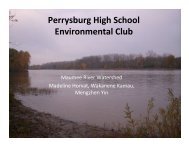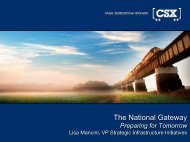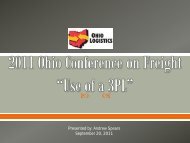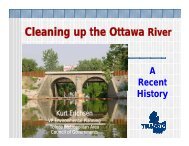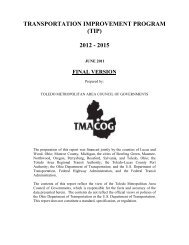Stormwater Management Standards Manual - Toledo Metropolitan ...
Stormwater Management Standards Manual - Toledo Metropolitan ...
Stormwater Management Standards Manual - Toledo Metropolitan ...
You also want an ePaper? Increase the reach of your titles
YUMPU automatically turns print PDFs into web optimized ePapers that Google loves.
1. that the political subdivision should assess the <strong>Manual</strong>’s usefulness and applicability to itself and<br />
its powers,<br />
2. that it should consult its legal counsel before adopting any part of the <strong>Manual</strong>,<br />
3. should understand the ramifications of each of the chapters on its community and government if<br />
it should adopt them,<br />
4. should adopt only those chapters that apply to it and the jurisdiction’s ability to implement or<br />
enforce, and<br />
5. should consider adopting any or all of the attached Model Ordinances or Resolutions that it is<br />
willing and able to implement/enforce only after consulting its legal counsel.<br />
In keeping with this guidance perspective, the language of the <strong>Manual</strong> itself has been revised to reflect a<br />
more advisory tone – “should,” “suggested,” “recommended” – while the attached Model<br />
Ordinances/Resolutions are the actual regulatory and enforcement documents and use more<br />
prescriptive language – “shall,” “will,” “must” – to describe the rights and responsibilities of the governing<br />
body and the regulated actors. In addition, these model regulatory/enforcement documents are truly<br />
“models” and the adopter should feel free to change them to meet their needs and powers, as long as<br />
the resulting language maintains the originally intended result: protection of the environment while<br />
allowing for appropriate land use activity.<br />
1.3 Impacts of Development on Water Quantity<br />
The hydrology of a watershed changes immediately in response to site clearing and alteration of the<br />
natural landscape. A site’s existing stormwater storage capacity is quickly lost as vegetation is removed,<br />
natural depressions are graded flat and topsoil and wetlands are eliminated. As the soil is compacted by<br />
heavy equipment and resurfaced with impervious materials, rainfall can no longer infiltrate into the<br />
ground and becomes sheetflow, resulting in an increase in the amount of stormwater runoff. These<br />
topographic modifications, along with the installation of "efficient" drainage facilities such as catch basins<br />
and pipes, greatly alter natural drainage patterns and increase stormwater quantity, eventually causing<br />
changes in stream shape and function. Recent studies show that significant damage to the stream’s<br />
morphology, water quality and biotic population starts to occur when the level of impervious surface of its<br />
watershed reaches approximately ten percent (USEPA, 2003; Center for Watershed Protection, 2002).<br />
The removal of natural vegetation from a site may increase project site costs and reduce site stability in<br />
several ways. First, excessive site excavation or grading may add unnecessary site preparation costs.<br />
Second, and related, existing vegetation acts as the natural “rebar” of the soils and its deep, strong,<br />
entwined root systems provide stability to land areas, a critical characteristic along any type of waterway.<br />
Natural vegetation along bank slopes secures and stabilizes the banks, reducing erosion and the<br />
resulting sedimentation into the waterway which degrades water quality. Any stormwater runoff<br />
pollutants or sediments that leave an urban or rural site contribute components which degrade water<br />
quality in the watersheds draining into the Great Lakes. On January 12, 2006 evidence of the sediment<br />
plume flowing from the Maumee River into Lake Erie was captured in an astronaut’s photograph from<br />
space (Astronaut Photography of Earth, http://eol.jsc.nasa.gov) and is shown on the cover of this<br />
manual.<br />
Third Edition <strong>Stormwater</strong> <strong>Standards</strong> <strong>Manual</strong> September 2008 Page 21


